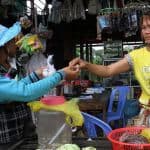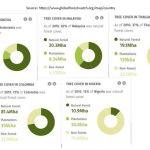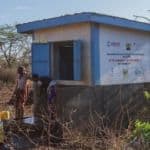‘Wall Street Meets Impact’: SOCAP’s Owners – New and Old – Discuss its Move Toward the Mainstream
Last month, SOCAP made headlines across the social business world with a bold announcement: As it celebrates its 10th anniversary, the network of social impact-focused investors and entrepreneurs is moving to new ownership, with a group of impact investors led by Robert J. Caruso of Kantian Social Ventures taking the reins from former owners MissionHUB LLC. As SOCAP put it in announcing the move, the new ownership will allow it to “begin expanding its brand reach to larger, more mainstream audiences and enhance its consumer engagement practices to help bring impact investing into the mainstream consciousness.” As its first initiative, this new-look SOCAP is launching The Good Capital Project, which aims to “convene all constituents within impact investing and the social capital market to drive greater collaboration and accelerate capital flows into purpose-driven investments.” The project will kick off with a one-day launch event in New York City on June 19, and tickets are available here.
What do these moves toward the mainstream imply for the organization, its flagship SOCAP conference and the broader sector? We discussed these and other questions with SOCAP’s co-founder, Kevin Jones, and John Morris of V2V Associates, who helped pull the new ownership deal together.
James Militzer: Talk about the Good Capital Project: What’s it about and why are you launching it now?
Kevin Jones: To understand why the market is ready for the Good Capital Project now, you have to go back to why SOCAP then. In 2008, SOCAP was built to solve a problem. It was a problem that I had and that all the other early pioneers had, as we tried to launch the first venture capital funds to invest in social enterprise.
Everybody hated our core concept. The idea that you could invest with the goals of philanthropy, but with a rigorous for-profit, early stage, venture fund to help promising social enterprises expand was resisted to the point that three different billionaires ordered us out of their offices; our idea was one they did not want to be around and, they said, it even made them hurt physically.
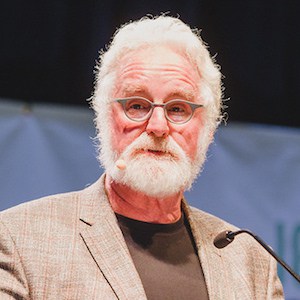
Kevin Jones
I’d been successful in business several times before, and in my earlier life, I would have changed my product to one that they liked, that didn’t make them hurt when they thought about it. But I decided I wanted to build a business right there, in the space they said could not exist, between giving and investing. SOCAP was built to overcome two pocket thinking; that I invest and only think about how much money I am putting in my pocket. And then I put some in another pocket and do good with it. We wanted those pockets to open up to each other, to bring in investment into a space that at the time only had philanthropy or aid.
Our hypothesis was, they can’t be around the idea of a market that values meaning, the stuff that matters, when they are thinking abstractly about their asset classes and returns. When they see the companies that we and others want to invest in, they will get out of their heads and want to get involved in the sector. To sell our product, we had to build a market, they had to think differently to buy anything in that market. To be an impact investor you say it’s OK to invest in all of us and for myself at the same time, that is what impact investing is.
And to get SOCAP off the ground we had to have people realize they needed a market. What they had was a series of closed door summits, with the right people in the room and nothing moving then or afterward.
We were disrupting the dominant paradigm that existed around convening; they only wanted the right people in the room. We wanted the barbarian to meet the byzantine and find a way to become unlikely allies. And we thought that the vitality of that market, like an intersection of caravans at an oasis, would be appealing and augment the summit model. We would find a place between the silos and their tents where they met valuable strangers who became unlikely allies. We sold ourselves as the space between where you might find unlikely allies, and hear voices you sometimes don’t hear in your typical meetings, hear new ideas, see experiments.
That part of the plan worked nearly flawlessly; by emphasizing bringing in new groups who needed to be taken seriously. From indigenous entrepreneurs and investors, to African American initiatives focused on using entrepreneurship and innovative financial products to begin erasing the racial wealth gap, to, now, development agencies more than before. We keep SOCAP on the edge of the newest innovations by finding the new valuable strangers who could become unlikely allies.
That has made SOCAP the place where people come to get partnerships done and deals done or advanced, because all the people you need to see are going to be here.
And I think our abundant kind of vibe that people find attractive, the energy at SOCAP, comes from us keeping the heart at the table, continually asking why it is we are doing it, and whether or when we are sacrificing something more than we are comfortable with to make the kinds of returns we came in expecting. We are always bringing in a new group of outsiders into the room with the powerful and trying to build relationships there.
But sometimes you need a bit more order, a way to fit all the pieces together, more like a supply chain or a collaborative system for the capital providers to work together than a Mideast bazaar like SOCAP. That’s what the Good Capital Project is designed to do. Starting with a design session on June 19th, Juneteenth, in New York at a really cool place to do interactive sessions, we will launch a two-year exploration of all the sources of capital that want to connect to impact investing.
We want to be at the intersections to help the traffic flow between the various silos that want to connect to impact investing, to fit it in to what they are already doing. For example, last month we met in Armenia with the UNDP, USAID, the IFC and the Finnish and Malaysian sovereign funds, among others. On the other side were some impact investors trying to work together to establish a protocol for when to use subsidies and when they distort the market.
In similar fashion, a blog series across the taxonomy of funders is in the works. For example, family offices meet impact, community development financial institutions meet impact, angel networks meet impact, faith-based investors meet impact, anchor institutions meet impact, sovereign funds meet impact, etc. … That should help us flesh out the taxonomy, blockages to overcome and bridges needed at each intersection of something meets impact.
People from international development organizations that put out billions in aid will be coming June 19, meeting with impact investors, but the huge story, of course, is that we are bringing in Wall Street. Demand is driving Wall Street to want to figure out how to plug in to impact, which requires using syndication to reach scale.
But that big intersection, Wall Street meets impact, is not happening in a vacuum, there will be other stakeholders there, too, development, family offices, local investors, investors from marginalized communities in the United States each of whom needs to be able to plug in to meet the demand coming from the customers of the big Wall Street banks and financial houses.
What needs to happen, of course, is that the impact market needs to move into the phase of coordination; the period in a market’s maturity when exchanges can start to thrive. This was the era in our industrial history when railroads standardized their gauges so that commerce and people could flow. The coordination stage of a market is when you get past one off cooperation partnerships and initiatives and start linking systems.
The Good Capital Project hopes to provide content sessions with other global events in our orbit, Sankalp Africa, Sankalp India and Sankalp Indonesia (we’ve shared content for years and have worked well together). We hope to pop up next year during the Skoll World Forum; inside the gate if we make the cut, or at Marmalade if we don’t, so that this dialogue around how to make all the different capital players link up can be carried forward, at other convenings and online.
We think this is the dialogue to be having now. We know what to do, it’s time to figure out how to do it together, to get over ourselves and get it done. We will be developing an online community and content platform as demand and sponsorship intersect.
So that’s why SOCAP then and why the Good Capital Project now. This is a natural phase of a market’s evolution; into coordinating, setting up plumbing, replicating what works, with culturally literate local adaption as a way to scale.
Militzer: You say in the Good Capital Project announcement that its purpose is to develop “common tools, resources and frameworks to align the capital markets with the human needs of tomorrow and produce a cohesive taxonomy and market map to address global challenges through market-based solutions.” Can you explain what this means – what tools/resources are in the works, and what need will be filled by the taxonomy/market map?
John Morris: Let me translate what that means a bit for you.
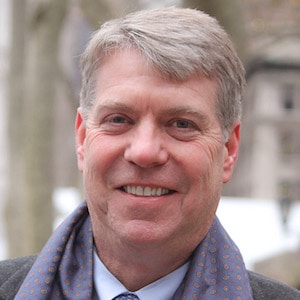
John Morris
Common tools could be a crowdfunding platform, a due diligence research database, or maybe a social network of investors. Resources would include the expertise and capabilities that is distributed across the broad marketplace and frameworks are processes that have been developed to apply and scale these resources such as an investment banking, wealth management, due diligence process, educational curriculum and others. By convening all the builders and users of these tools, resources and frameworks we can help create a map of all this activity. This map becomes the taxonomy of the impact markets. This evolves the existing activities from a collection of projects to a common set of tools that scale the whole marketplace for good, bringing the market into a phase of coordination that Kevin mentioned.
Aspirationally, I use the example of the Human Genome Project. Many scientists were mapping different genome sequences in their own labs and intellectual silos. The Human Genome Project provided collaboration and support to map the Human Genome much quicker driving an explosion in medical advances that continues to come years later. We believe that by bringing more coordination to what is already happening in pockets, we can accelerate the flow of capital to sustainable solutions that today’s consumers demand and the world needs.
Militzer: How does the GCP align with the other recent changes at SOCAP, namely the shift to new ownership and the refocusing that’s occurring around your 10th anniversary this year?
Morris: The key impact of the new ownership is added resources and enhanced focus. Today, we are moving SOCAP from an event-focused initiative to a brand-focused organization. We believe the SOCAP brand can be synonymous with positive change at the intersection of money and meaning in many more theatres around the globe. SOCAP Group will focus on three areas:
- Events focusing on in-person interaction
- Digital content curation focused on marketplace education and engagement by helping to distribute our partners’ most important content
- Initiatives such as the Good Capital Project, which can leverage the strength of the first two capabilities to create a greater impact by bringing focus through our convening power
Militzer: What other changes do you anticipate under the new ownership? Does it give you any new freedom to take SOCAP’s work in directions that weren’t possible before?
Morris: We first look to leverage the incredible work of Kevin Jones, Rosa Lee Harden, Lindsay Smalling and Jamie McGonnigal. I believe they have been pleased with Bob Caruso as chairman and myself as managing partner supported by the additional resources of the team behind us that brings a new level of strategic planning, centralized support and execution skills. In addition, new growth capital allows us to add resources and invest in initiatives such as the Good Capital Project. Our likeminded investors have been key to launching this next phase of SOCAP and have not only committed capital but have pledged their other resources – and with the caliber of the group we have behind us, that is a tremendous luxury.
Don’t expect any change from the spirit and authenticity developed by the founders. This is what attracted all of us together. There is tremendous mutual respect for our shared values and divergent skill sets.
Militzer: There’s understandable excitement about the benefits of “going mainstream” among much of the social business and investing sectors (and SOCAP as well), but do you have any concerns that temper your excitement? For instance, Oxfam raised several concerns about impact investing in a recent NextBillion post that seem well-founded, and that could apply to a growing profit-centric focus in social business more broadly. Do you share these concerns? If not, why not? And if so, how can the sectors avoid these pitfalls?
Morris: Personally, I think these are great discussion topics and they will ultimately find their way into the new taxonomy of our future capital markets. I think Kevin will drill deeper in the coming weeks into this subject. Overall, I believe SOCAP’s primary role is to provide the forum to debate these issues and in doing so help create and foster the market. One of the biggest opportunities we have ahead of us is the growth of blended value or first loss type of structures where nonprofit and for-profit capital have a critical role to play in various tranches. Call it a GDO or good debt obligation that has different levels of financing to achieve an important outcome. Something tells me they will be much more popular than the CDOs (collateralized debt obligation) of the 2000s!
Militzer: Relatedly, does “going mainstream” have to mean “generating profits for investors and entrepreneurs that are equivalent to non-impact focused sectors”? Or is it possible to reshape the mainstream public’s thinking about business and profit so that money is no longer such a primary focus? In other words: Will social business change the mainstream market, or will the mainstream market change social business?
Morris: Marketplaces going back to the beginning of time have always reflected the demands of the consumer. Demands in marketing terms are made up of needs and wants. Wants can be driven by social norms and often get detached from needs. This detachment has gone to excess over the last generation. The new consumer is much more aligned with respect to their wants and needs and the marketplace will change to reflect that. Whether one instrument is below market returns and the other is above is not the issue. The issue is where it fits in the broader marketplace and whether there is a segment of investor that is comfortable with that particular investment’s return profile and has a demand for what it is solving to. The development of this new marketplace is hard, it needs the smartest minds to find optimal combinations of sustainable businesses that the purely financial investor is interested in. We believe the same expertise that in the past created synthetic derivatives, such as CDOs that provided different tranches of risk to investors, can be re-directed to create blended value securities of concessionary and non-concessionary tranches to allow wonderful outcomes. There are so many smart minds coming into the market with this objective. SOCAP’s role is to create the discussion between academia, financial intermediaries and entrepreneurs to see this market become the only market.
Militzer: Give us a preview of this year’s SOCAP conference – will it be noticeably different because of the new ownership or the 10th anniversary celebration?
Morris: We are so amazed by the authenticity of the SOCAP founders and leadership team. They have been committed to producing diverse speakers, democratic approaches to content, broad ranges of topics, and convening a big tent event where surprise relationships happen. For such a large event, it also nurtures a great authentic feel. This we will preserve as it is the essence of SOCAP.
Your point of celebrating 10 years is important. It is not just 10 years of all the great work of SOCAP, but 10 years of many other milestones in our industry that we feel we should all reflect on this October. We expect to have both an intellectual celebration and literal one at SOCAP17. One way or the other, by the end of the week, I expect many people to be holding their brains from overuse!
We had our first meeting with the team before the deal was consummated. Lindsay Smalling had a long wish list of improvements that could come with added resources. We look forward to supporting her with many of these items – we think this will improve the experience. Many people go to SOCAP in order to hold many meetings, we hope to help with that experience more. We are also working with sponsors more closely to help them maximize their ROI and help SOCAP be a platform to help some of their initiatives. With the background we bring in finance, we also may start introducing easier ways to navigate the conference for those who are there to build portfolios or identify impact investing opportunities. We are all ears on improving SOCAP and Lindsay has been fantastic at incorporating the feedback every year. There have been many things she has wanted to incorporate in the past but hasn’t had the resources to do so. She has them now and it will be fun to see the resulting feedback from this year’s attendees. We are very proud of what it is today, what it has been. We are super excited about what the brand can now accomplish.
Militzer: If you could look into a crystal ball and see SOCAP and the social business sectors 10 years from now, how would you imagine they’ll look? What will be different/the same, or better/worse?
Morris: SOCAP adopted the phrase at the “intersection of money & meaning.” We love that! Most major industries have undergone massive disruption through the combination of new technologies, changing consumer preferences and cross industry integration. We feel financial services is at the very beginning of this process which puts SOCAP on the bleeding edge of the discussion. We believe that by focusing on convening and catalyzing this change, we will constantly be surfing the biggest waves of change in our industry. That is our role.
The new consumers demand a better marketplace. After so many waves of change in financial services that were not driven by consumers, we are finally seeing a time in which the consumers will drive change. Everyone else will adapt and SOCAP will play an important part in the discussion to allow vendors, intermediaries, entrepreneurs, asset providers, governments and others to meet those demands for a better world. SOCAP17 in October and the launch of the Good Capital Project are two examples of how we play that role.
James Militzer is NextBillion’s senior editor.
Photos courtesy of SOCAP, dianaconnolly101 and V2V Associates.
- Categories
- Investing, Social Enterprise
- Tags
- impact investing
